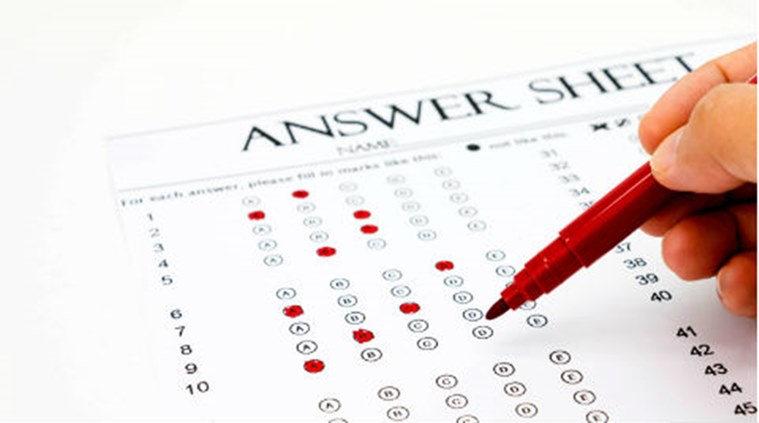Santosh Kumar Dash, Kiran Kumar Kakarlapudi, & Balakrushna Padhi
The University Grants Commission (UGC), through the National Testing Agency (NTA), conducts the National Eligibility Test (NET) twice a year, mainly in June and December. The exam is preliminary screening for aspiring teachers or lecturers. Over the years, substantial changes have been made in the examination pattern, evaluation and eligibility criteria. However, the credibility of the examination is being questioned, particularly with regard to how it tests subject knowledge and whether it does serve its intended purpose. Against this backdrop, we conducted a survey (it is still under review) including 210 candidates who have appeared for the examination at least once. Based on the survey findings, the following reforms could improve the standing and outcome of JRF-NET examination.
The first regards evaluation. Negative marking has been introduced in several objective-type questions based competitive examinations conducted nationwide to prevent guesswork. But NET is one of the few such exams that has still not introduced negative marking. The logic behind shifting to objective type questions is well understood and clear. But it is not clear why no negative marking has been introduced in the examination.
The majority of respondents in our survey voted for the introduction of negative marking in the NET examination. There is a general opinion, particularly after the introduction of objective-type questions, that they are not adequately representative of various sub-fields in a subject. For example, analysis of responses indicates that 74 per cent of respondents agree that all subfields do not have equal representation. Not making sure that questions reflect all subfields equally defeats the very purpose of shifting to objective-type questions.
The second area that requires reform is eligibility conditions. Many competitive examinations have eligibility criteria such as age and number of attempts besides minimum educational qualifications and percentage of marks. As far as UGC-NET exam is concerned, there is neither age limit nor a cap on the number of attempts.
However, age restriction remains for the award of UGC-JRF. A candidate above 28 years of age can’t be awarded JRF, although s/he has secured the required marks. The logic behind such restriction is ambiguous. This may not be the right approach if the objective is to select the best candidates for research from a student pool.
Take for instance a student who completes master’s degree at 22 and takes up a job. After working for, say, 7 years, she wants to pursue a career in academics and return to higher studies. But she is not eligible for JRF, which at present provides stipend of Rs 31,000 a month.
The age restriction to avail JRF might dis-incentivise students from considering a return to pursuing academic research. Second, the validity of JRF at present is two years. Such an arbitrary restriction on the validity in a way demotivates students to explore other opportunities.
Students in the Western countries do not follow linear progression in obtaining degrees, unlike in India. It is common for students to take a break and get back to studies once they are really interested in pursuing research. In this context, the validity for JRF could be extended, as 74 per cent of our survey respondents, too, opined, to a five-year period.
Most UGC-recognised colleges and universities now apply age restriction (of 35 years) to apply for assistant professor jobs. Therefore, age restriction to appear for UGC-NET can be further relaxed. One important aspect that needs greater attention is whether the UGC should restrict the number of attempts as in the case of UPSC examinations.
It may be possible that any candidate constantly pursuing an exam for years would develop the necessary skills to clear it someday. But the fact that the candidate has failed to clear it many times indicates s/he may not have adequate knowledge on the subject to clear NET.
Another issue is that of a candidate clearing the NET multiple times. Since only 15 per cent of candidates finally qualify, if a candidate clears NET, but does not qualify for JRF, s/he should be allowed to write the exam only for JRF at the next attempt to prevent other students being crowded out. About 87.6 per cent of survey respondents supported this suggestion.
There is also a need to create a database. We are living in a data era. Big data analytics is gaining popularity in academic research and provides robust empirical and precise estimates.
Since the UGC has made the application process online, it may be worth creating a database that records the number of students appearing and qualifying NET and JRF, among other things. One could even include individual characteristics such as place, university or college and age.
Availability of such data will help understand which states are doing better in terms of clearing the exam (both NET and JRF), and the quality of education across states, course structure and subjects. This could help policymakers take the required initiatives to improve the quality of higher education in India.
The highlighted procedural and systemic changes in the pattern of NET suggested, which are based on evidence, can improve UGC-NET.
–Santosh Kumar Dash is a Research Fellow at IFMR LEAD, Chennai; Balakrushna Padhi work as an Economist at Centre of Excellence in Fiscal Policy, and Taxation (CEFT), Bhubaneswar; and Kiran Kumar Kakarlapudi is a consultant at United Nations-ESCAP, South and South-West Asia, New Delhi. Views are personal.
